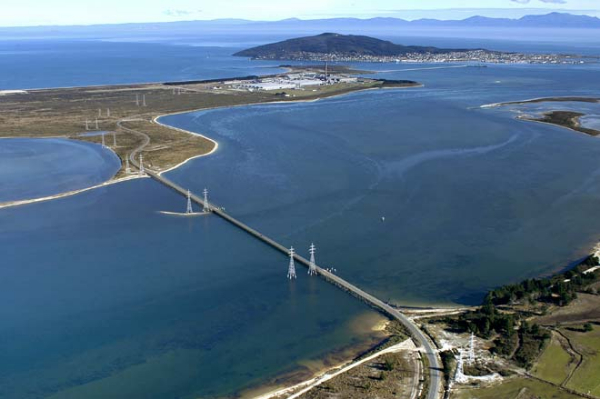
A policy analysis of the key energy policies of the main parties in the 2020 Election by the Scoop Editorial team as part of the Transitional Energy Series.

One of the notable features of the energy policy in debate is the convergence between Labour and the Greens to have 100 percent renewable electricity by 2030.
Labour’s previous position had been to achieve this by 2035 with the riding clause in “normal hydrological year” – a recognition that thermal backup will be needed when hydro lake levels are low.
The move has been met with general scepticism by most in the sector with the evidence – including the work of the Interim Climate Change Committee – saying squeezing out the last few percent of thermal generation would push up power costs and increase the risk of power outages in dry years.
Increasing the price of electricity would make electrification of other parts of the economy – notably industrial processes – more expensive and unlikely. It would also increase energy poverty.
Renewables currently produce around 80% of electricity and under current settings are on track to reach between 90 percent and 95 percent by around 2030-2035. This has gone a bit backwards in recent years as low lake levels along with gas supply constraints have increased the coal use, but most feel this is a general blip. However there are concerns about what will happen in the years ahead when gas reserves in existing fields deplete.
Lake Onslow Pumped Hydro
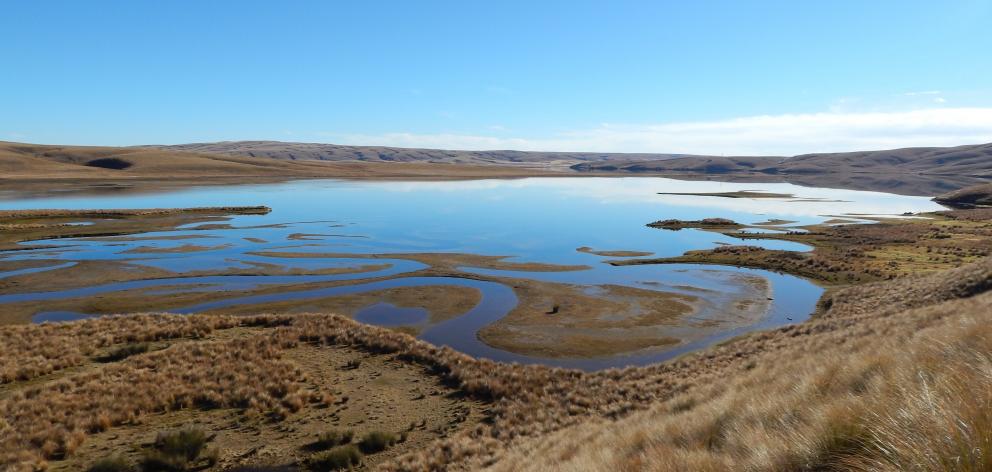
Labour’s proposal to get around the dry year problem has been to float the building of a pumped hydro scheme at Lake Onslow. Pumped hydro is a simple concept. It stores water in a lake and when wholesale prices are high the water flows and creates electricity before being stored in another dam. When power prices are low, water is pumped back to the upper dam.
Former Meridian Energy chief executive Keith Turner has long been an advocate of such a scheme and has been influential in Labour’s thinking on the Lake Onslow project.
The scheme is huge, putting Think Big projects of the past in the shade. Lake Onslow would produce 5,000 GWH a year, doubling New Zealand’s entire hydro capacity. It would go a long way to solving the dry year problem and fill New Zealand’s generation needs for decades.
However, the energy sector has been generally sceptical about this as well. The main argument against it is the cost. Labour puts this at around $4 billion, but this is almost certainly at the low end of the scale with some estimating $6 billion-plus.
Even if it was done at Labour’s initial estimate, there are many who argue the $4 billion could be better spent to sort out NZ’s electricity issues and greenhouse gas emissions targets. $4 billon would buy a lot of electric cars, wind farms, solar panels, batteries and insulation.
The other question is how it would be paid for. Labour has been scant on details about this, though to be fair they are spending $100 million on a business case to answer these questions and look at other alternatives to the dry year problem.
Labour’s policy documentation says they will look at some form of levy for the Lake Onslow project, but it also says it will result in cheaper electricity. It is hard to square that circle. But, while Labour is sure it can get to 100% renewable electricity and have cheap power – it has yet to show a path to achieving both those objectives.
Another significant issue is the pumped hydro project would also destroy two significant wetland areas and would be unlikely to get resource consents under the current law without legislative intervention.
There are also unanswered questions about how it would operate. Most assume it will operate on a commercial basis and produce electricity when it can make money and not sit there as one of the world’s most expensive batteries only operating when other lake levels are low.
When the scheme was investigated by the Interim Climate Change Committee, its capital and operating costs were estimated at $268 million a year. That was more than twice the cost estimated of keeping some gas-fired capacity in the generation fleet that would otherwise be about 98 percent renewable.
The uncertainty about Lake Onslow has contributed to a virtual freeze on planned construction of renewable electricity generation capacity – both geothermal and wind. Lake Onslow is only one reason for this. The energy sector, like the rest of the world, is grappling with the uncertainties caused by covid-19.
Tiwai Point
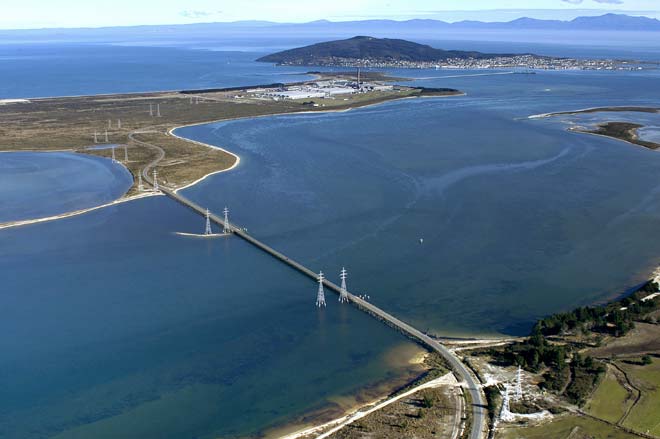
There is also uncertainty caused by the question over the closure of the Tiwai Point aluminium smelter. This is currently scheduled to be closed in August 2021. The smelter’s majority owner Rio Tinto is now certain to be offered a deal over its $60 million a year transmission bill – along with the cheap energy deal on the table – to extend the ramp down to whoever is in power post-election. This will have to wait for after the election and then the decision will be in the hands of Rio on whether they will take it.
Closure of Tiwai would free up the Manapouri dam and 13 percent of the country’s electricity supply whether it happens next August or five years down the track. The uncertainty about this is another reason for the slow down in new renewable electricity generation.
National has proposed to partner with Rio Tinto to install technological upgrades which they claim would provide up to 200MW of electricity available to the grid as dry-year cover. However, in reality, subsidies to Tiwai have been massive and repeated since it began operations. It is now reported to pay just 5c/kWh, compared to the average residential price of 29c/kWh.
Transmission Issues
One problem shared by the Tiwai closure opportunity/threat and the Lake Onslow scheme is that they are both in the least populated part of the country. Getting power from the south to the upper North Island is expensive and time-consuming. The National Grid Operator Transpower has brought forward some work to reduce transmission constraints. However, the combination of getting power from Manapouri and Lake Onslow is going to take major work throughout the country all of which will have to paid for – almost certainly through higher electricity bills or via taxes and a direct government subsidy.
The transmission issue leads to another plank of Labour’s energy policy – hydrogen.
‘Green Hydrogen’
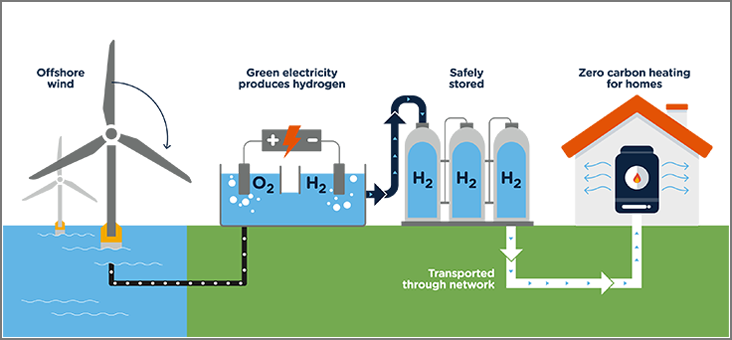
A number of people have suggested instead of shifting the power from the deep south, New Zealand (or someone) should build something to replace the smelter. One of these potential new users is already in the South Island in the form of dairy processing units and other industries currently using coal to electrify their operations. Once again this is expensive. The cost of the transmission of electricity to the plants is high, and Fonterra and others are wary of converting to electricity without a promise of cheap power deals or subsidies to make the risk of higher energy bills more palatable.
Another commonly mooted suggestion is replacing the smelter with another high energy using business. On many levels this makes sense, the dam is there – connected to an existing industrial site with access to a port. Ideas have ranged from Data Centres through to heavy manufacturing such as batteries or solar panels, (and even a Tesla ‘Gigafactory’).
Hydrogen production is increasingly being advocated as a leading contender, with Meridian and Ngai Tahu throwing their weight behind the idea. Meridian does have some self-interest in such a technology as it needs a customer for its Manapouri power.
Hydrogen also happens to be a favoured technology of current Energy Minister Megan Woods. The difference between ‘Green Hydrogen’ and other hydrogen production is based on the use of excess renewable electricity to produce storable and transportable hydrogen power. This is seen as a greener option than current production whereby natural gas is commonly used as the feedstock.
The idea is largely premised on a large overbuild of renewable electricity to ensure security of supply and when there is an excess and power is cheap, use it to make hydrogen – a stable and storable energy source. Under this thinking hydrogen would effectively become New Zealand’s battery, capable of being used as energy here or exported for sale. Calling it a once-in-a-lifetime opportunity, Goldman Sachs estimates the addressable market for green hydrogen could be worth USD$11.7 trillion by 2050.
However, critics of the idea ask who will pay for the electricity generation overbuild if it does make electricity cheap enough to make hydrogen production at scale economic without subsidy. And furthermore, who will be profiting from the deal?
Woods and many others are not deterred by such criticism and remain enthusiastic about the potential.
The arguments around costs, benefits, and unintended consequences flow into another area of policy with strong links to energy – greenhouse gas emissions reductions.
Carbon Emissions Policy
In policy circles there is much argument and discussion about marginal abatement costs. Put simply, once you have a price on carbon – such as through the Emissions Trading Scheme – Marginal Abatement can be defined as the cheapest way of removing it or replacing it with less polluting processes.
While the cost of carbon through the ETS has been low, it is rising and set to rise more. This points out the ‘low hanging fruit’ in terms of emissions. Large industrial economies had made significant reductions by moving from coal to gas. The scope for this in New Zealand is more limited with electricity already largely renewable, and NZ’s heavy manufacturing sector very small (and set to be smaller still with the closure of Tiwai and the financial woes hitting NZ Steel).
Electrification of Industry/Agriculture
New Zealand’s gross greenhouse gas emissions in 2017 were estimated at 80.9 million tonnes of carbon dioxide equivalent (Mt CO2-e). More than 40 percent of this was from animal biological emissions.
In the energy sector, New Zealand can make the easiest gains through electrification of the transport fleet and/or using more fuel-efficient vehicles. Furthermore, MBIE and EECA advocate converting industrial processes (including agriculture) to electricity, away from coal and gas.
Energy Efficiency
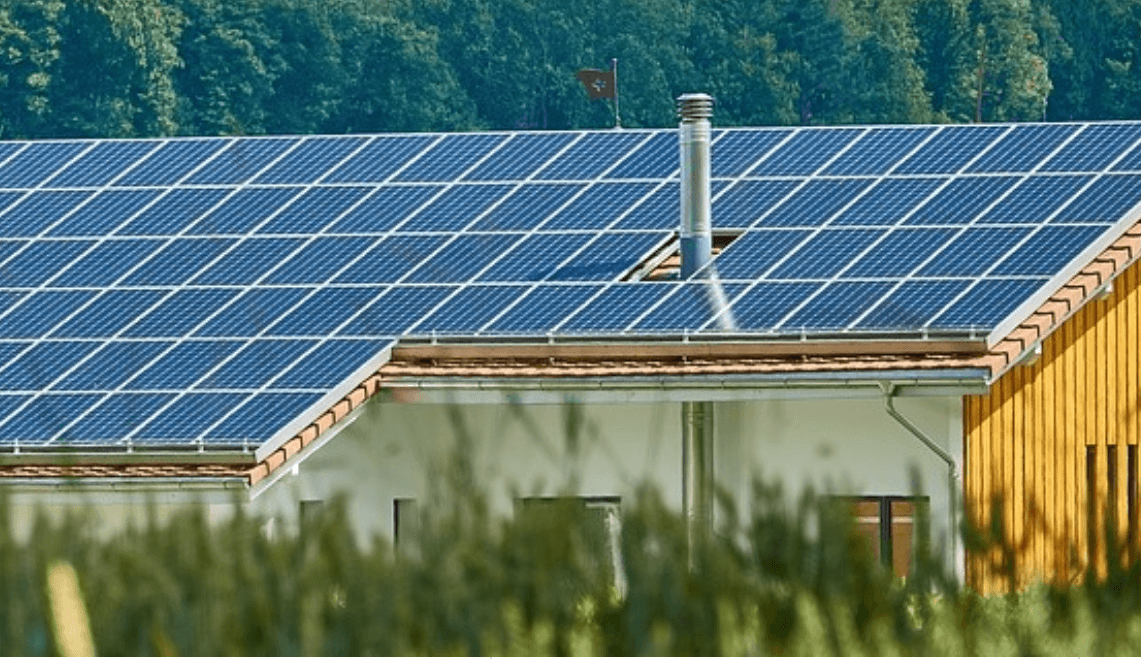
Another important part of the equation is improving energy efficiency – most notably in New Zealand’s poor housing and general building standards which fall well below many developed countries. Most parties have policies that support some form of this – most of which is based around marginally expanding the depth and breadth of current subsidies and grants.
For instance, Labour are proposing to double to $8 million a year funding the Energy Efficiency and Conservation Authority uses to help industry switch from coal and gas to biomass and electricity. The Greens would triple the Government’s financial support for businesses making the switch to clean energy, from $33 13m to $100m a year.
Both Labour and the Greens are also looking to other regulatory intervention.
Greens
The Greens in particular want to ban new fossil-fuelled industrial heating systems and boilers within the first 100 days in Government, end industrial coal use by 2030, and to end industrial gas use by 2035.
The Greens are also looking to subsidise households to install solar and batteries for their own homes, with Government finance partially funded by a levy. As well as to equip all suitable public housing with solar panels and batteries, including new public housing.
Labour
Labour is more cautious on solar, and says it will investigate regulatory or market barriers to the uptake of solar micro-generation for residential and commercial buildings.
National
In contrast, National are proposing a more ‘policy neutral’ stance on energy and associated emissions reductions. This essentially means taking a neutral stance on fuels and allowing the carbon price to sort out the most efficient way to reduce emissions.
National has said the role of government should be to regulate greenhouse gas emissions, not tell people what fuels they can use for different things.
Following on from this philosophy, National (and ACT) both believe the ban on new offshore oil and gas exploration should be repealed.
National would also investigate new technologies to support a transition to a net-zero emissions economy such as carbon capture and storage.
The party argued : “With 85 percent of our electricity already renewable, only 14 percent of New Zealand’s energy emissions are now from electricity. We need to focus on all energy emissions rather than just the 100 percent renewable goal for electricity. The Climate Change Commission advises that; ‘Going from 99 per cent to 100 per cent renewable electricity by overbuilding would avoid only 0.3 Mt CO2e of emissions at a cost of over $1,200 per tonne of CO2e avoided. It is also likely to result in much higher electricity prices than in the business as usual future’.”
National considers natural gas as a strategic resource essential for the security of electricity supply and for high temperature industrial processes.
Electric Vehicles
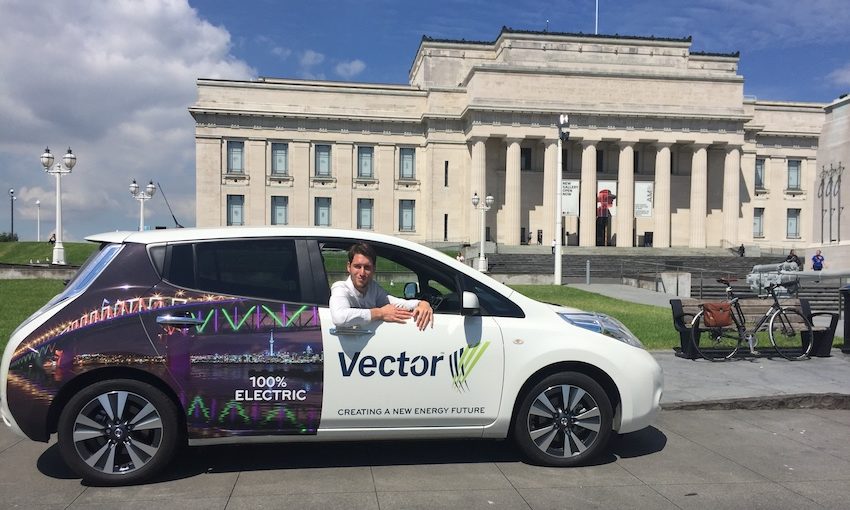
One area where there is convergence between most of the parties is to increase the uptake of EVs and move to more efficient vehicles.
Labour has committed close to $32 million to introduce a new ‘clean car standard’ to help reduce emissions from light transport and lower household transport costs. The standard, for new and used cars coming into the country, would be phased in over four years from 2021. It would be set at 105 grams of CO2 per kilometre travelled. Labour said that standard matches what cars in Japan – the main source of this country’s used imports – were required to meet in 2014.
Labour would also progressively increase to $25 million a year the funding available for low-emission transport initiatives such as rolling out EV chargers and trialling new electric buses. The funding, up from $6 million a year now, would come half from government and half from industry levies.
National has said in government it would boost EVs take up mainly through exempting them from fringe benefit tax until 2025. It said the estimated cost of this ($55 million) was one of a number of policies that would help towards a target of 80,000 EVs on road by 2023 – four times the current level.
Other policy legs include exempting EVs from Road User Charges until at least 2023, allowing EVs to use bus lanes and high-occupancy lanes with a new EV licence plate for ease of administration, and targeting a third of the governments light vehicle fleet to be EV by 2023.
The estimated fiscal impact of the Electric Vehicle package is $93m over four years. This includes $55m over four years in lower revenue from exempting electric vehicles from Fringe Benefit Tax and $38m over four years in electrifying the Government fleet.
The Greens are also proposing to follow the lead of a number of European countries( including the UK under a Conservative government) and placing a date on a ban of imports of new conventionally powered vehicles. Such dates imposed vary so far, but most are around 2040, with the UK considering bringing this forward.
Other energy policy proposals of note:
Green Party
They would develop a National Environmental Standard for wind energy generation to support new wind farms and revise the existing National Policy Statement for Renewable Electricity Generation to make it easier to upgrade existing wind farms with new technology.
Another pledge is to use EECA to fund five highly efficient LED light bulbs for every household at a cost of $21m to the Government which they said will save every home $105m a year.
The Greens say they will also look to change the way the national grid is funded. “Households and businesses that want to build clean energy capacity or switch away from fossil fuels are often held back by the rules that govern the electricity network. First movers get disadvantaged by having to pay for their own network upgrades which can hold back change. The Green Party in Government will work with Transpower to solve this problem so grid upgrades can happen faster and their costs get shared fairly.”
They have also said that lines companies should be made to work together to build more localised, distributed generation rather than forcing connection to the grid.
“We will require lines companies to consider all options for providing reliable, affordable electricity to customers on a level playing field – such as using distributed generation and storage, not just building more poles and wires. To help make community energy projects and person-to-person energy sharing work more easily, we’ll change the rules so that individual power meters (ICPs) can be used more flexibly. Currently there can only be one retailer per ICP connection, and meters are controlled by the retailer. Supporting the uptake of community solar requires coordination between many different parties – and our regulation needs to enable, rather than inhibit, coordination. This may require changes to the Electricity Authority’s Multiple Trading Relationships rules.”
Labour
Labour proposes developing a new National Policy Statement for Renewable Electricity Generation; removing regulatory barriers to renewable electricity generation; and restoring a ban on new thermal baseload generation.
They will also restore Part 6A of the Electricity Act 1992 to ban the building of new thermal baseload electricity.
“There is simply no need to continue to build thermal baseload electricity and, as we work towards 100% renewable electricity, it’s important we send a clear message that additional thermal generation for baseload electricity generation has no future in New Zealand.”
Labour will encourage Kainga Ora, the Ministry of Education, and other state agencies to investigate how best to reduce energy costs through energy efficiency measures and the installation of solar power generation, and to implement these measures where practical, especially in new buildings.
ACT:
ACT proposes to repeal the ban on new offshore oil and gas exploration.
ACT would also repeal the Zero Carbon Act and the Emissions Trading Scheme and introduce a “no-nonsense climate change plan which ties our carbon price” to that paid by New Zealand’s top five trading partners.
TOP:
TOP would ensure the Emissions Trading Scheme is restored to being a proper cap and trade scheme. It should remain closed to international units, phasing out the free allocations to energy-intensive exporters which would in fact likely have a large impact. They also propose auctioning credits with the cap set at the 2030 target.
They believe revenue raised by the ETS should be used in the first instance to invest in improving energy efficiency in the nation’s homes and small businesses. That includes insulation and the adoption of energy-efficient heating systems such as storing hot water in large cylinders – a far lower-cost way to store energy over a period of days, compared to battery storage.
TOP aim to ensure electricity pricing encourages a move to 100% renewable energy and propose end-consumer investment in both energy efficiency and solar and/or clean wood burning.
NZ First:
NZ First support the Zero Carbon Act and an independent Climate Commission.
If the Climate Commission determines that agriculture is to be included in the ETS, then upon entry, the free allocation to agriculture will be 95% but decrease progressively at a significant rate with all revenues from this source recycled back into agriculture in order to encourage agricultural innovation, mitigation and additional planting of forestry.
The government’s vehicle fleet, where practicable, would become emissions-free by 2025/26.



 Martin LeFevre - Meditations: For The Love Of Sycamores
Martin LeFevre - Meditations: For The Love Of Sycamores Ian Powell: A Timely Call For A Social Contract In Health
Ian Powell: A Timely Call For A Social Contract In Health Binoy Kampmark: Bratty Royal - Prince Harry And Bespoke Security Protection
Binoy Kampmark: Bratty Royal - Prince Harry And Bespoke Security Protection Keith Rankin: Make Deficits Great Again - Maintaining A Pragmatic Balance
Keith Rankin: Make Deficits Great Again - Maintaining A Pragmatic Balance Richard S. Ehrlich: China's Great Wall & Egypt's Pyramids
Richard S. Ehrlich: China's Great Wall & Egypt's Pyramids Gordon Campbell: On Surviving Trump’s Trip To La La Land
Gordon Campbell: On Surviving Trump’s Trip To La La Land